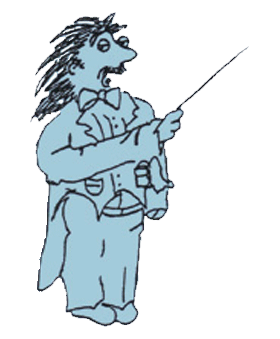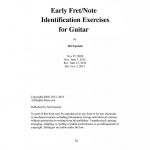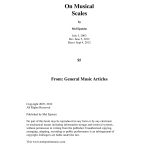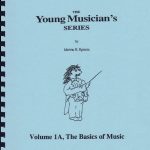Interval Exercises for Voice
General Remarks
Intervals are pairs of pitches selected from the tones in a scale. They form the building blocks of chords and provide a structural foundation to the notes in scales and melodies.
Being able to easily and accurately find and sing the pitches of the various intervals is an essential skill of a singer.
Interval Rules
Intervals can be described as Major (M), Minor (m), Perfect (P), Augmented (A), and Diminished (d).
Intervals come in various sizes (i.e. pitch ranges): Unisons, Seconds, Thirds, Fourths, Fifths, Sixths, Sevenths and Octaves. 2nds, 3rds, 6ths, and 7ths are typically found as Major and Minor. Unisons, 4ths, 5ths, and Octaves are usually found as Perfect.
When a Major interval is raised by a half step, it becomes Augmented.
When a Major interval is lowered by a half step, it becomes Minor.
When a Major interval is lowered by two half steps, it becomes Diminished.
When a Perfect interval is raised by a half step, it becomes Augmented.
When a Perfect interval is lowered by a half step, it becomes Diminished.
When a Minor interval is raised by a half step, it becomes Major.
When a Minor interval is raised by two half steps, it becomes Augmented.
When a Minor interval is lowered by a half step, it becomes Diminished.
Voice Exercises
When doing the exercises that follow, if you can play an instrument, use that instrument to help identify the sounds that are trying to create with your voice.
You may alternate between playing the designated tones on the instrument and singing them. Do this until you reach a point where you don’t need the external sound source to establish which pitches you are trying to hit.
If you can’t play an instrument, or in addition to using one, I strongly recommend obtaining an electronic chromatic tuner, such as are available for stringed instruments like guitar and bass guitar. This tuner has a built-in microphone and will display the letter-name of the pitch that your voice is closest to, as well as how near your sound is to the exact frequency of the pitch letter shown. This will give you a visual representation of which pitch you are actually singing as well as how accurately you are singing that pitch.
Follow all commonly observed actions to warm up your voice and prepare your body before tackling the exercises.






